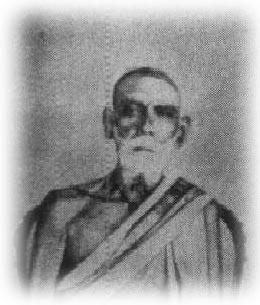Special Features
MELARAGA KRITIS OF KOTEESWARA IYER

Those were days when forty of the Melakarta ragas were deemed as Vikriti ragas (Vivadi ragas) and hence ‘dosha ragas’, that could not be sung in concerts. Before Koteeswara Iyer’s period, Maha Vaidyanatha Sivan had composed a lengthy Ragamalika in the 72-mela ragas. But Koteeswara Iyer was the first one to compose separate songs in Tamil in all the Melakarta ragas with his vaggeyakara mudra, ‘Kavi Kunjara Dasan’ and also the raga mudra, which blended smoothly with the lyrics. All the songs are dedicated to his kuladeva (family deity), Muruga and hence titled ‘Kanda Ganamudam’. The songs are highly poetic and are adorned with swarakshara sandhi-s, beautiful sangatis (musical phrases), raga bhava and depth. Even vidwans considered Vivadi ragas as difficult to handle. But Koteeswara Iyer, at the age of 47, not only composed his Melaraga kritis but also demonstrated and popularised them. His sishya (disciple) N Ramakrishnan, who was PA to Kamarajar, former Chief Minister of Tamilnadu, published these kritis in book form with notations - the first part with 36 songs in the Suddha Madhyama ragas in 1932, and the remaining 36 songs in Prati Madhyama ragas in 1936. Apart from these, he composed 31 kritis, 4 Varnams and a few poems (Venba).
Koteeswara Iyer was not only an ardent devotee of Muruga but also that of goddess Karpagambal of Mylapore.
In those days Tamil kritis were not very popular and until his time, did not receive elaborate treatment. Music concerts mainly consisted of Tyagaraja, Dikshitar and Syama Sastri kritis. Though there were kritis in Tamil by Muthutandavar, Gopalakrishna Bharati and Arunachala Kavi, they were sung as tailpieces. Tevaram, Tiruvachakam, Tiruppugazh and Prabandham were sung mostly in temples. So, great personalities like S Satyamoorti, Rajaji, Kalki, TKC and others took pains to propogate Tamil songs in concerts.
After he did his first group of 36 songs, Koteeswara Iyer invited prominent artistes and musicologists and sang all the songs himself. They appreciated his work and also encouraged him to continue his Herculean task. His songs were a mixture of Sanskrit and Tamil, and were highly poetical with a natural flow and excellent raga bhava (example, ‘Amponn ammaye’ in Sriragam). He himself has written the meanings, Pada Urai, of the songs. He has used many varieties of Talas in various eduppus. He had the highest regard for Dikshitar and Tyagaraja and has composed songs on both of them. He followed the Sampoorna mela paddhati of Ramamatya, which Tyagaraja followed. Like Tyagaraja kritis, his songs also had many sangatis. But like Dikshitar his songs also had chittaswaras, raga and vaggeyakara mudras. Thus he was influenced by both of them. Even though Dikshitar had composed songs in most of these ragas, his was the Asampoorna mela paddhati of Venkatamakhin and were not called Melaraga kritis. Koteeswara Iyer however did not compose even a single song with Samashti Charanam, although Dikshitar has to his credit many such songs. Nevertheless, the musical approach and pattern of Koteeswara Iyer’s songs is the same as that of Dikshitar.
T L Venkatarama Iyer, D K Pattammal, Parur Sundaram Iyer, V V Sadagopan, S V Parthasarathy and Banni Bai are few of the popular musicians who learnt the melakarta kritis from him. Koteeswara Iyer had three daughters and two sons, of whom Nagaratnam (Nagamani), his second son, propagated his songs. These were popularised by musicians like Kalakkad Ramanarayana Iyer, S V Parthasarathy and N C Vasanthakokilam. Credit also goes to the All India Radio in this regard. It conducted a series of concerts, each with two kritis (including raga, kriti, nereval and kalpanaswaras), one in Suddha Madhyama raga and the other in Prati Madhyama raga, every Thursday in the 1950s, sung by S Rajam and G Vaidehi. The former is one of the very few musicians who can render all the kritis of Koteeswara Iyer with authenticity. I fondly hope more and more musicians will come forward to learn and render these beautiful kritis in their concerts.
Sarasa Rangaswami